1) fearless / risk taking
Absolutely does not fear anybody or anything. There is no higher up person for an entrepreneur. There is no rule that is respected and no definition that is taken just as that. They fear no failure, they fear no total loss, they fear not to be laughed at. They do not fear to risk everything they have for their vision – and they do risk everything they have.
[Related with: (2) creative, (3) determined, (4) curious, (5) independent, (6) confident, (7) connected, (8) communicative]
Corresponding habits: making fast and determined decisions
2) creative / compositive
The ability to be creativity means finding a gazillion bits and pieces in your brain and composing it in no time to a new picture. Creativity requires maximum inputs, from travel, discussions, reading… Being compositive is the ability to very quickly identify opportunities and turning them into business cases or even innovation. Experiment fearlessly, no matter what the outcome maybe.
[Related with: (1) fearless]
Corresponding habits: Seem to change course over and over again. But never lose sight of the ultimate goal. Knowing there is never a straight line to get to the top.
3) determined
Determination is a mindset. Doing anything, whatever it takes to make something happen. No irritation from others, no distraction, no uncertainty. Determined entrepreneurs never give up – ever. If you are bankrupt, you still have 3 to 6 month to repair and get up again.
[Related with: (1) fearless, (2) creative / compositive]
Corresponding habits: Consistency – Pushing the direction in everybody’s mind – every day. There is only one vision, one ultimate goal and they let everybody know. They plan their days towards their goals – not towards responses to others.
4) curious/open
Wide open mind. Wanting to really know in detail how things work, how people do things, how we live, what the barriers are, where the limits maybe if any. Listening to others very carefully, without constructing an argument half way through.
[Related with: (1) fearless]
Corresponding habits: Playful – They look very quickly at all kinds of things, want to know everything without ever going really deep. 20% of the knowledge is all they need to know 80% of what there is to know.
5) independent
There is nothing and nobody that prevents the entrepreneur do their things. No friend, no family, no lack of money, no rules, no legislation can get into their way. Societal rules, conformism and alike fences are respected but do not apply to entrepreneurs. [Related with: (1) fearless, (3) determined]
Corresponding habits: Super-Focus – There seem to have no family, not even seeing other people with certain personal needs. It’s important to understand that independence often feels like ruthless – but it is the vision that is much larger than live that drives these people to almost impossible results and that means independent behavior. Most people only begin to understand when such a vision was fulfilled.
6) confident
Once an idea is manifested, true entrepreneurs have no doubt that it will work. They just know it will. The extraordinary confidence comes from a ‘brain defect’ that spills emotional knowledge from the right brain half into the brain without consulting the rational part of the brain.
[Related with: (1) fearless, (3) determined, (5) independent]
Corresponding habits: Decision Maker – fast decision making, often others feel to be run over, turns sometimes into arrogance. They don’t deal with devils advocates and uncertainty of others. They simply have that trait to know.
7) connected
True entrepreneurs are always highly connected. Connected with their market, connected with the player, connected with customers or targeted customer, connected with investors, influencers, industry associations and so forth. Entrepreneurs have no issues to connect to anybody.
[Related with: (1) fearless, (4) curious, (6) confident]
Corresponding habits: Networking – They connect with almost everybody, then maintain only those that are relevant. May sometimes feel a bit superficial, yet they make almost everybody feel important. They know that connections are more precious than gold and they know how to deal with it.
8) communicative
Communication is the most important skill humans developed. We can communicate with words, text, pictures and even preserve past events. That helps us learn beyond any animal. Top entrepreneurs are masters in communication with others, drawing an imaginary world that they are seeing in the future and attract others. At the same time they can sit and truly listen for an hour and construct the situation they hear into a solution and opportunity. Learning and sharing – in this order – are the keys to entrepreneurial communication.
[Related with: (1) fearless, (2) compositive, (4) curious, (7) connected]
Corresponding habits: Extroverted – They ask anything they need to know right at the moment they want to know. They listen and learn very intensely. They also tell everybody and their dog what they are up to, why it’s important. They spread the word about how they will change the world and expect everybody to do so too.
9) involving
Entrepreneurs are very involving. Involving their team, their customers, their market, their investors and their business partners to actively participate in their undertaking. Entrepreneurial involvement of others go way past the concept of delegation but truly inspire others and fearlessly pulling others into their gravitational powers.
[Related with: (1) fearless, (2) creative, (3) determined, (6) confident, (8) communicative]
Corresponding habits: Engagement – They don’t worry too much if people have time for them. They simply ask and get people’s involvement. Sometimes it feels like they think they are the only important people on earth. And what they really think is they are one of the most important people on earth – often they actually are.
10) intelligent
While we may debate what intelligence is, here is our definition: “Intelligence is the ability to comprehend a never before experienced situation, abstract the essence and developing a solution by simply thinking through as many as reasonable options without trial and error”. In that sense, true entrepreneurs are intelligent and involve others to solve the problem.
[Related with: (4) curious, (8) communicative, (9) involving]
Corresponding habits: Simplification – Breaking the most complex things down into a few or only one simple aspect. Pretty hard for some people to follow and ignore that everything else is just work to be finished.
Fearlessness is the most important glue in between all the key traits. And it is not just generally fearless – it means unconditional fearlessness. Top entrepreneurs have a lot of respect for others and other things, they do experience uncertainty but quickly and clearly decide where to go. Decision making is not a ‘trait’ but a skill – one can learn to make decision. However traits like being fearless, creative, determined, open, independent, confident, connected, communicative, involving and intelligent are key traits for making good decisions and getting them executed.
It sounds like a very demanding profile – it is. As it turns out, only 0.007% of humans are actually successful entrepreneurs.
Few interesting things about this list:
a) None of it can be really ‘trained’ people my change towards, it but not necessarily trained.
b) They are all interconnected, not one goes without some of the others
c) If one or even more are missing the ability to be a successful entrepreneur is decaying very quickly
d) This is uniquely dedicated to entrepreneurs. Any other career or engagement has some of them but never all – and may have others, but they maybe not relevant for entrepreneurs. At least our finding when we compared it with Scientists, Artists, Politicians, Actors, Musicians, Architects, Athletes and so forth.
All in all, fearless, creative, determined, curious, independent, confident, connected, communicative, involving and intelligent are the top 10 traits for entrepreneurs.
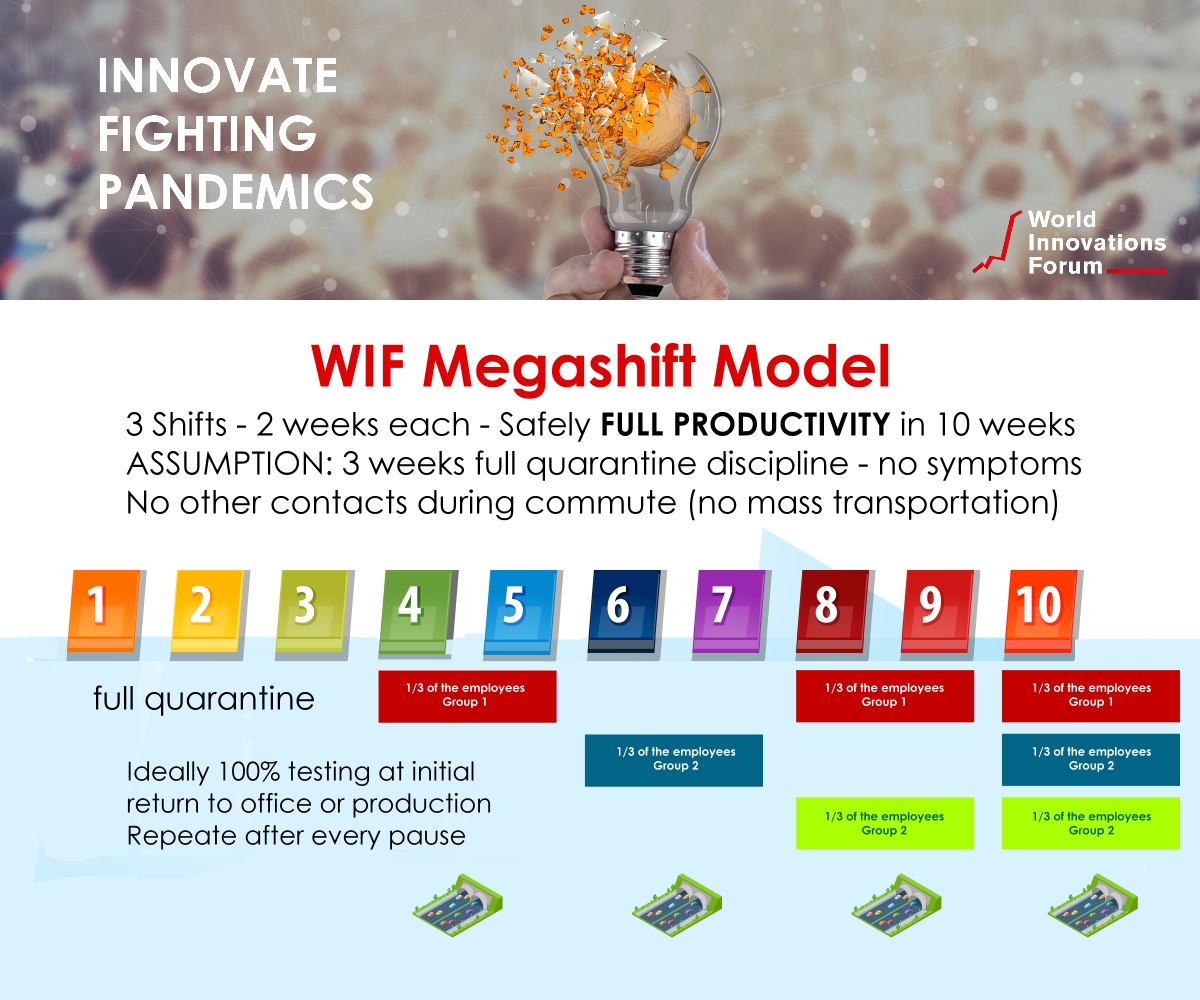
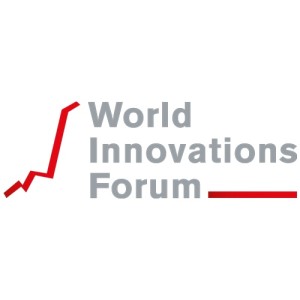
 The 7 virtues of idea validation
The 7 virtues of idea validation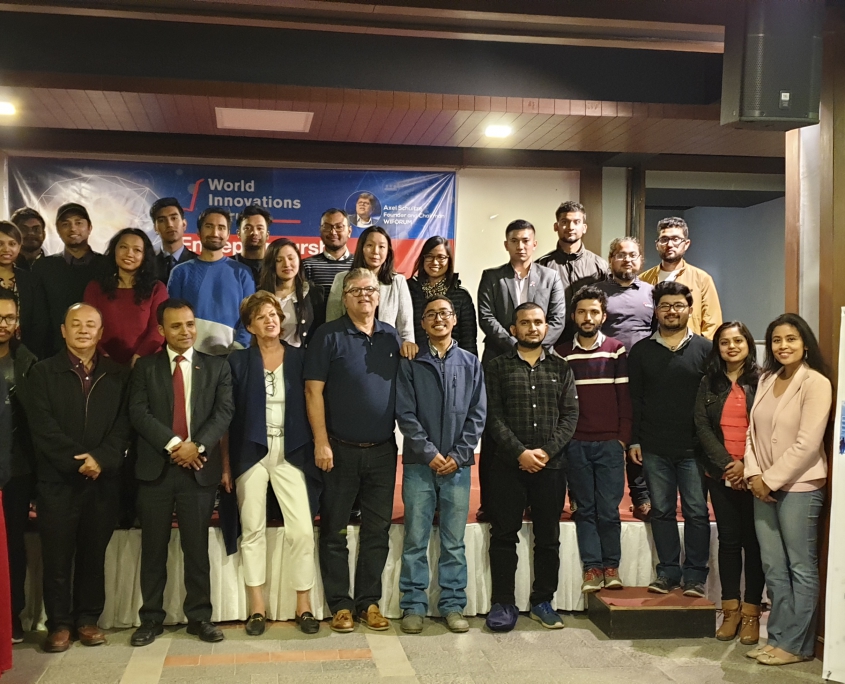 From day one till now, we decided to work on the ground. So when we visited countries and worked with young entrepreneurs or those who want to become one, we feel the heartbeat and learn how we can support them best. Amazingly, we experienced a warm welcome from entrepreneurs. We realized they rarely an opportunity to speak with experienced entrepreneurs from other countries. When we talked to local co-working spaces, accelerators and investors, we experienced a much more critical position. “What is your plan, what is your approach, what do you want to do?” our answer was always the same: “We have no plan, there is no approach, we don’t know what we will do. You will tell us how we can be helpful and we see what we can do”. We experienced an amazing transformation from a polite and professional welcome to a warm and friendly ‘love to hear your story’. Over time we heard lots of stories about support organization. To sum it up and make a narrative: “They come here, have a clear plan, based on what their sponsors tell them to do, execute “their plan”, make a lot of stirrup, then come with a team of professional photographers and camera men where everybody smiles, write reports and go back home to hunt for the next round of funding. We appreciate the help but often times it’s just too much work for us with no progress at all”. So why do you do that? we asked. Answer: We are not in a position to say no. Again, our own position was up for discussion: Are we in a position to say no and follow our own entrepreneurial instincts? So far we met and spoke with roughly 1,000 entrepreneurs and startups from a variety of countries including Nepal, Vietnam, Cambodia, Taiwan, Singapore, South Korea, Japan, Nigeria, Ghana, Uganda, Kenya, South Africa, Peru, and a few others. We met with about 50 investors and investor networks, more than 50 co-working spaces, universities other enablers and with several leading politicians in various capacities. We ran two accelerator programs and a series of entrepreneurs workshops. The feedback was inspiring and moving.
From day one till now, we decided to work on the ground. So when we visited countries and worked with young entrepreneurs or those who want to become one, we feel the heartbeat and learn how we can support them best. Amazingly, we experienced a warm welcome from entrepreneurs. We realized they rarely an opportunity to speak with experienced entrepreneurs from other countries. When we talked to local co-working spaces, accelerators and investors, we experienced a much more critical position. “What is your plan, what is your approach, what do you want to do?” our answer was always the same: “We have no plan, there is no approach, we don’t know what we will do. You will tell us how we can be helpful and we see what we can do”. We experienced an amazing transformation from a polite and professional welcome to a warm and friendly ‘love to hear your story’. Over time we heard lots of stories about support organization. To sum it up and make a narrative: “They come here, have a clear plan, based on what their sponsors tell them to do, execute “their plan”, make a lot of stirrup, then come with a team of professional photographers and camera men where everybody smiles, write reports and go back home to hunt for the next round of funding. We appreciate the help but often times it’s just too much work for us with no progress at all”. So why do you do that? we asked. Answer: We are not in a position to say no. Again, our own position was up for discussion: Are we in a position to say no and follow our own entrepreneurial instincts? So far we met and spoke with roughly 1,000 entrepreneurs and startups from a variety of countries including Nepal, Vietnam, Cambodia, Taiwan, Singapore, South Korea, Japan, Nigeria, Ghana, Uganda, Kenya, South Africa, Peru, and a few others. We met with about 50 investors and investor networks, more than 50 co-working spaces, universities other enablers and with several leading politicians in various capacities. We ran two accelerator programs and a series of entrepreneurs workshops. The feedback was inspiring and moving. Who drives the Trillion $ aid industry?
Who drives the Trillion $ aid industry? The disconnect between donations and real help is growing. Over the holidays 2019/2020 we felt that we either find a radically different model or freeze the operation until somebody else is coming up with a better idea. Since no model was in sight and we experienced the deep frustration from other organizations, we decided to use our own innovation design techniques to explore alternative ways. As a first step, we disconnected ourselves from the conventional NGO space in favor of the actual beneficiaries we live for. The goal is to overcome the problematic “disconnect” from the group of people we want to help and find a modus operandi to finance the organization in a different way. With that we did a few things that should help us think on different levels:
The disconnect between donations and real help is growing. Over the holidays 2019/2020 we felt that we either find a radically different model or freeze the operation until somebody else is coming up with a better idea. Since no model was in sight and we experienced the deep frustration from other organizations, we decided to use our own innovation design techniques to explore alternative ways. As a first step, we disconnected ourselves from the conventional NGO space in favor of the actual beneficiaries we live for. The goal is to overcome the problematic “disconnect” from the group of people we want to help and find a modus operandi to finance the organization in a different way. With that we did a few things that should help us think on different levels: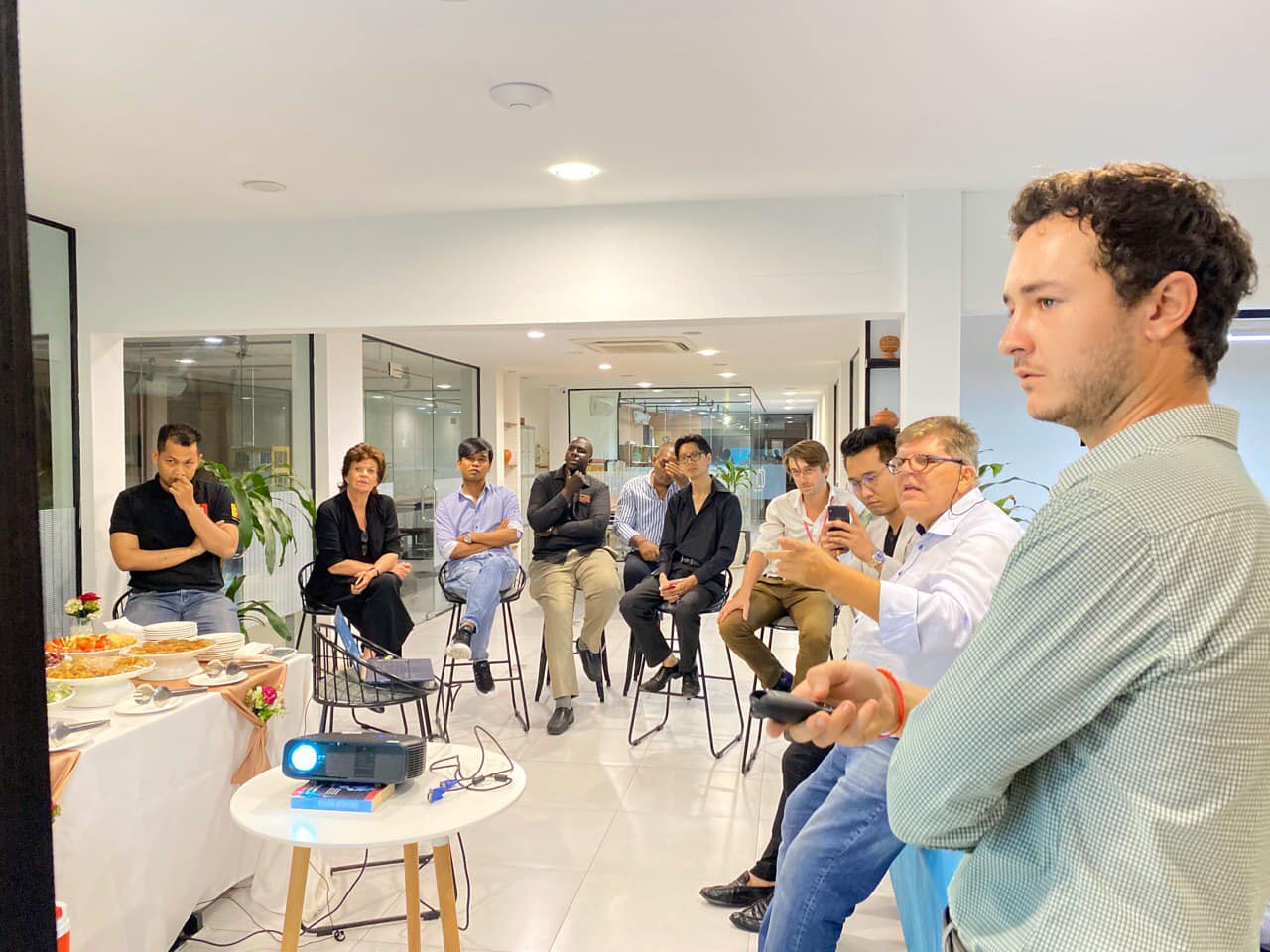 What a fast emerging nation. After the typical get to know each other and what our plans are, we have been very welcomed. At our entrepreneurs night at THE DESK in Phnom Penh, we met three amazing teams with very creative ideas. One is building a business that focuses entirely on e-commerce returns and its entire logistical challenges for any e-commerce operation that is not as powerful as Amazon. Another team, also in the e-commerce business, found a way to build a hybrid for small shops with no digital affinity to slowly emerge into the digital world by offering a scalable model from no digital to fully digital. And a third company is bold enough to actually stand up to Amazon and Alibaba by building an e-commerce platform with already over 100,000 products, mainly from China, at a purchase price level of the likes of Amazon. Bun, the founder, had already built a successful startup in Phnom Penh and had an exit with which he started his new company. All three joined the Accelerator program in Vietnam 3 weeks later. The event at THE DESK, who thankfully hosted the World Innovations Forum, had a significant impact on us and the ecosystem in Cambodia.
What a fast emerging nation. After the typical get to know each other and what our plans are, we have been very welcomed. At our entrepreneurs night at THE DESK in Phnom Penh, we met three amazing teams with very creative ideas. One is building a business that focuses entirely on e-commerce returns and its entire logistical challenges for any e-commerce operation that is not as powerful as Amazon. Another team, also in the e-commerce business, found a way to build a hybrid for small shops with no digital affinity to slowly emerge into the digital world by offering a scalable model from no digital to fully digital. And a third company is bold enough to actually stand up to Amazon and Alibaba by building an e-commerce platform with already over 100,000 products, mainly from China, at a purchase price level of the likes of Amazon. Bun, the founder, had already built a successful startup in Phnom Penh and had an exit with which he started his new company. All three joined the Accelerator program in Vietnam 3 weeks later. The event at THE DESK, who thankfully hosted the World Innovations Forum, had a significant impact on us and the ecosystem in Cambodia.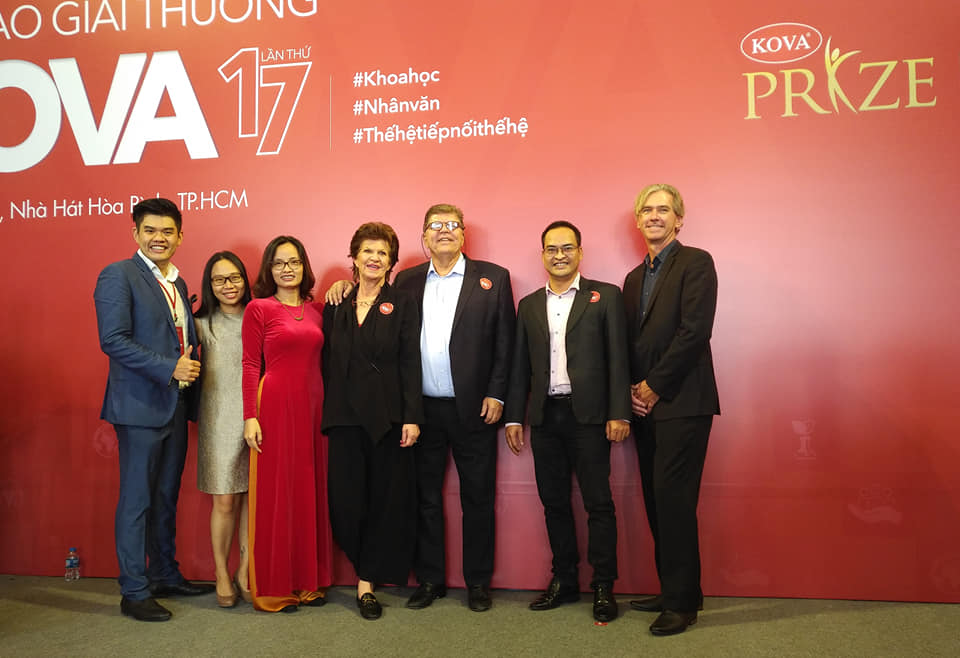 Our first visit to Vietnam was at a charity event from an already old friend from previous visits. His family is helping disadvantaged people, mostly women who are helping others. A very inspiring event with very moving examples of their work. It also shows that Vietnam is on its fast rise upwards where people make a lot of money but probably sooner than in other societies give back to those in need. In general, it was a great start meeting with all the people we met before. Since we are not a stiff and programmatic organization but people that love to work with people, friendships come more naturally. We believe it is what is needed to create impact rather than the impact on a report for donors.
Our first visit to Vietnam was at a charity event from an already old friend from previous visits. His family is helping disadvantaged people, mostly women who are helping others. A very inspiring event with very moving examples of their work. It also shows that Vietnam is on its fast rise upwards where people make a lot of money but probably sooner than in other societies give back to those in need. In general, it was a great start meeting with all the people we met before. Since we are not a stiff and programmatic organization but people that love to work with people, friendships come more naturally. We believe it is what is needed to create impact rather than the impact on a report for donors.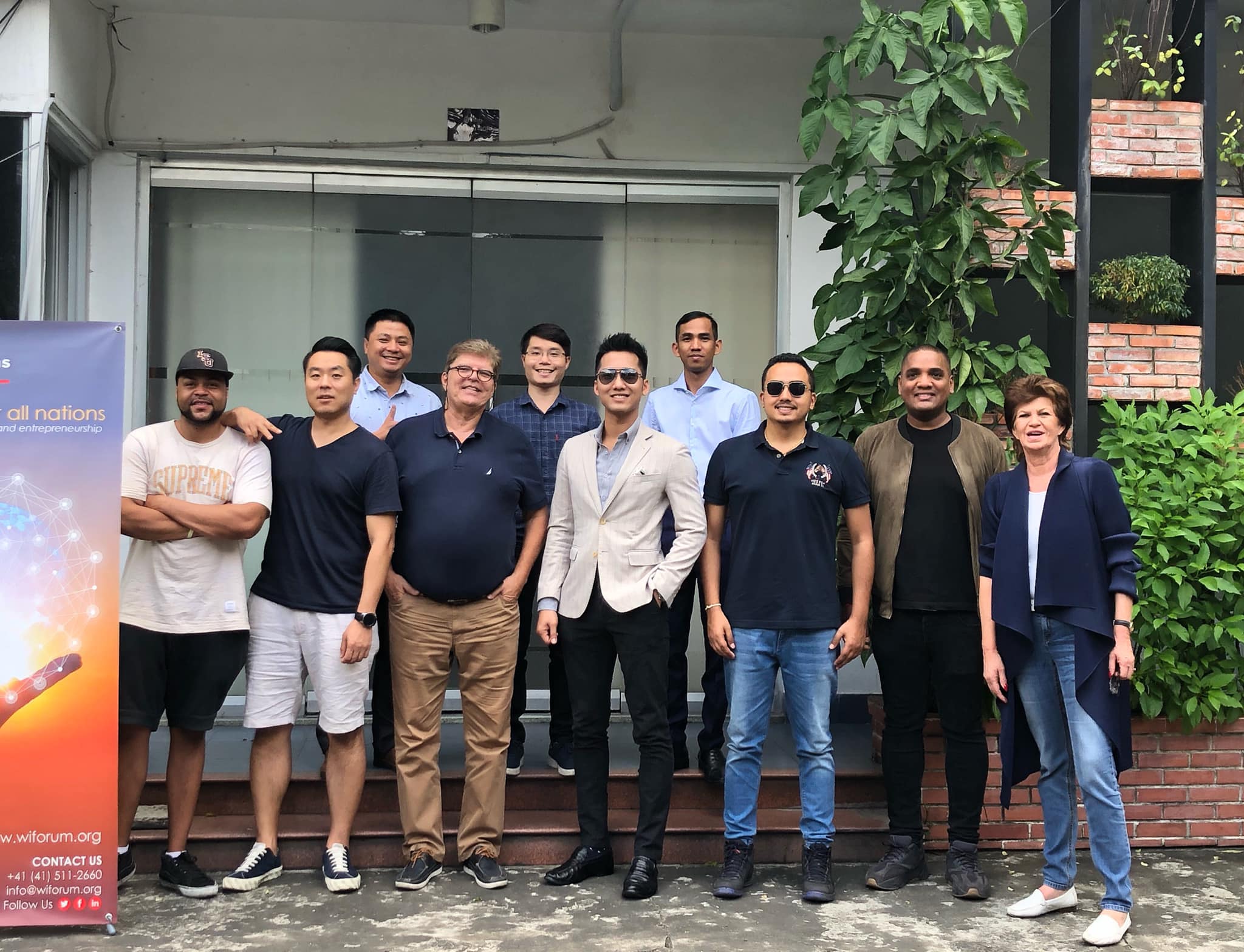 Our first seven accelerator flights have been before our work in emerging countries and were attended mostly by entrepreneurs from developed countries. The only exception was Flight 4, which was a spontaneous “Refugee Accelerator.” There we tried to help entrepreneurial refugees from Syria and Afghanistan to start their own business in Berlin, Germany, and instead of seeking jobs creating jobs. The result was four companies created, and two years later, 36 jobs created plus one going back and now helping entrepreneurs in Afghanistan to start their own business.
Our first seven accelerator flights have been before our work in emerging countries and were attended mostly by entrepreneurs from developed countries. The only exception was Flight 4, which was a spontaneous “Refugee Accelerator.” There we tried to help entrepreneurial refugees from Syria and Afghanistan to start their own business in Berlin, Germany, and instead of seeking jobs creating jobs. The result was four companies created, and two years later, 36 jobs created plus one going back and now helping entrepreneurs in Afghanistan to start their own business.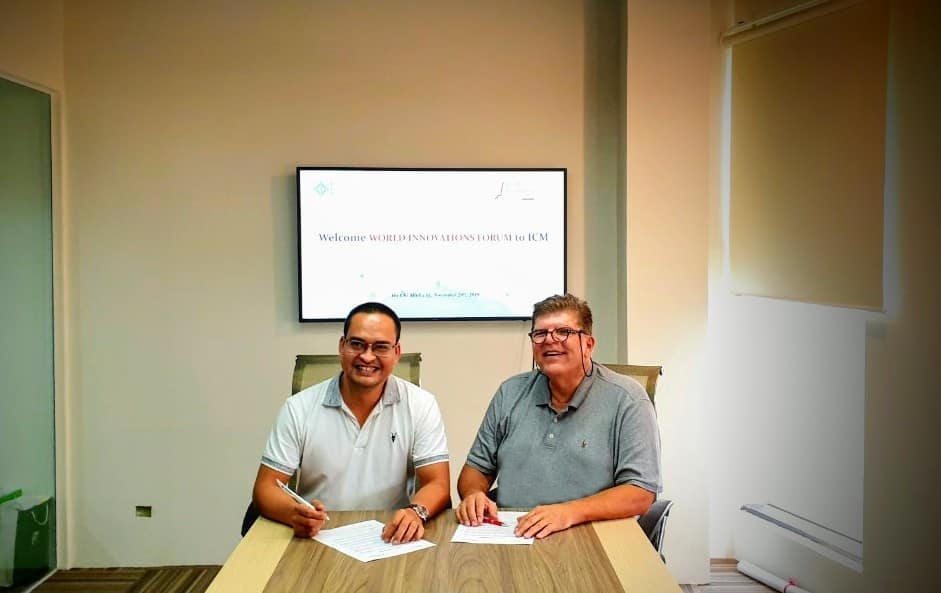 A new and very strategic partnership was formed with the Innovation Capital Management group that joined our global WIForum Innovation Capital Network. It’s the first investors’ group we have on board. The common ground is to make investments into startups in emerging countries much more accessible and to attract foreign investors by offering standardized stock purchase agreements in the English language with a notarized translation into the local language. The ICN project is still in the making but will be rolled out globally in 2020. Local investor groups from the countries we work in, such as Angel groups or venture capital firms, can join and collaborate on a framework that allows cross country investments, as long as the respective Foreign Direct Investment (FDI) policy for private equity exits ts in the respective country.
A new and very strategic partnership was formed with the Innovation Capital Management group that joined our global WIForum Innovation Capital Network. It’s the first investors’ group we have on board. The common ground is to make investments into startups in emerging countries much more accessible and to attract foreign investors by offering standardized stock purchase agreements in the English language with a notarized translation into the local language. The ICN project is still in the making but will be rolled out globally in 2020. Local investor groups from the countries we work in, such as Angel groups or venture capital firms, can join and collaborate on a framework that allows cross country investments, as long as the respective Foreign Direct Investment (FDI) policy for private equity exits ts in the respective country. Another important partnership signed Marita with the SunChan Incubator with multiple locations in Vietnam. The idea is to help the organization adapt our new Innopreneurs Academy Program, an accelerator framework that allows the partners to work with a full-blown business model through a much-extended program, including corporate innovators and mid-market businesses. The signing happened during the TechFest in Halong Bay.
Another important partnership signed Marita with the SunChan Incubator with multiple locations in Vietnam. The idea is to help the organization adapt our new Innopreneurs Academy Program, an accelerator framework that allows the partners to work with a full-blown business model through a much-extended program, including corporate innovators and mid-market businesses. The signing happened during the TechFest in Halong Bay.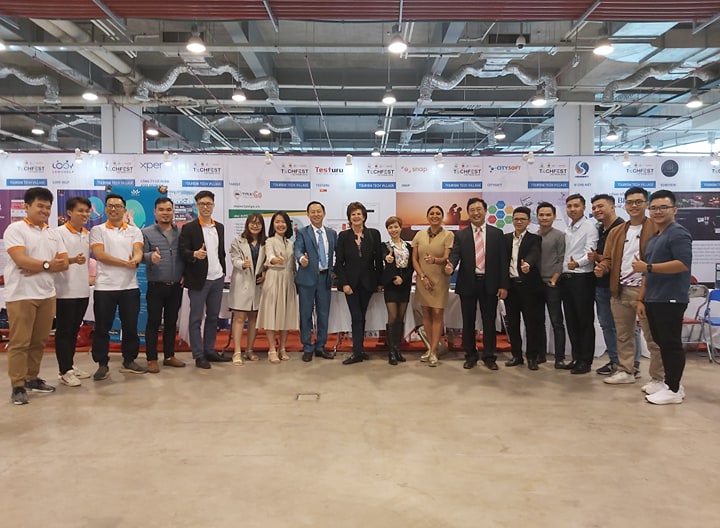 At the end of our stay, we visited a fantastic TechFest 2019 in the beautiful Halong Bay in northern Vietnam. We performed several workshops, gave keynotes, and conducted lots of meetings.
At the end of our stay, we visited a fantastic TechFest 2019 in the beautiful Halong Bay in northern Vietnam. We performed several workshops, gave keynotes, and conducted lots of meetings.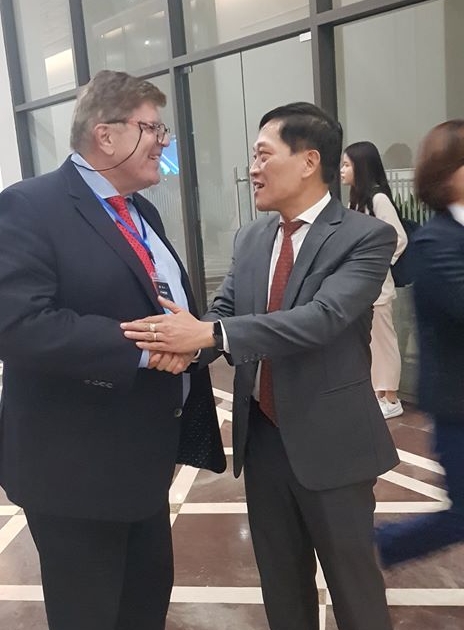 It was a pleasure and honor to meet the Minister for Science and Technology, Tran Van Tung, during the event and together on one of the podium discussions. You feel the ambition and energy of the country all the way to the top political ranks, very different than most other Southeast Asian countries. You literally feel the energy in Vietnam.
It was a pleasure and honor to meet the Minister for Science and Technology, Tran Van Tung, during the event and together on one of the podium discussions. You feel the ambition and energy of the country all the way to the top political ranks, very different than most other Southeast Asian countries. You literally feel the energy in Vietnam.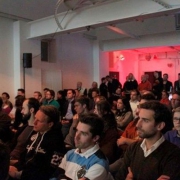 Africa, most of South East Asia and Latin America has showed phenomenal progress in education already; having 1,000 times more academic graduates than 50 years ago. There are now thousands of Universities across those continents, which created millions of well trained people – but with no equivalent job. What would a math degree do if you can’t work with it? Today there are more than a million graduates in in each of the three continents. The best they can do would be try to get to Europe or the US. Yet – that would be a devastating brain drain and remove all hopes, those nations have today. Before the inception of development aid, education was a function of having better employees to handle the jobs – but here we have better education but no jobs. We realized we needed to find out how exactly did developed countries develop.
Africa, most of South East Asia and Latin America has showed phenomenal progress in education already; having 1,000 times more academic graduates than 50 years ago. There are now thousands of Universities across those continents, which created millions of well trained people – but with no equivalent job. What would a math degree do if you can’t work with it? Today there are more than a million graduates in in each of the three continents. The best they can do would be try to get to Europe or the US. Yet – that would be a devastating brain drain and remove all hopes, those nations have today. Before the inception of development aid, education was a function of having better employees to handle the jobs – but here we have better education but no jobs. We realized we needed to find out how exactly did developed countries develop. We realized that nearly all developed countries, on three different continents rose to prosperity through innovation and entrepreneurship. Moreover, in understanding that entrepreneurship is not a western ‘invention’ but a universally applicable concept, for thousands of years across all cultures. We began to look for such entrepreneurs in developing and emerging countries. And we found jar dropping entrepreneurs and their startups in Argentina, Ghana, Nigeria, Peru, Vietnam and many other countries. With those results, we decided to turn economic development towards a direction that was probably not very well understood before: innovation and entrepreneurship.
We realized that nearly all developed countries, on three different continents rose to prosperity through innovation and entrepreneurship. Moreover, in understanding that entrepreneurship is not a western ‘invention’ but a universally applicable concept, for thousands of years across all cultures. We began to look for such entrepreneurs in developing and emerging countries. And we found jar dropping entrepreneurs and their startups in Argentina, Ghana, Nigeria, Peru, Vietnam and many other countries. With those results, we decided to turn economic development towards a direction that was probably not very well understood before: innovation and entrepreneurship.
 I’ve been asked so many times that I felt it would be good to write a blog post.
I’ve been asked so many times that I felt it would be good to write a blog post.